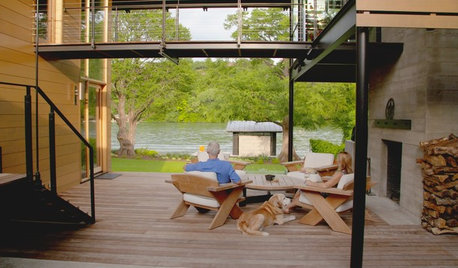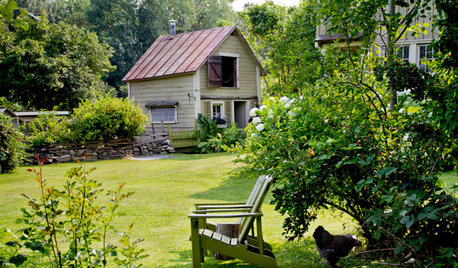Couple of plant & couple of critter pictures.
ladobe
15 years ago
Related Stories

MODERN ARCHITECTUREHouzz TV: This Amazing Lake House Made a Couple’s Dream Come True
Step inside a dream home on Lake Austin, where architecture celebrating gorgeous views has a striking beauty of its own
Full Story
INSPIRING GARDENSMy Houzz: DIY Love and Nature-Inspired Colors Update a Couple’s Garden
Secondhand finds and favorite pieces add whimsical beauty to this animal-loving couple’s property
Full Story
MY HOUZZHouzz TV: A Couple’s Garage Becomes Their Chic New Home
Portland, Oregon, homeowners find freedom in a city-approved garage home with DIY industrial flair
Full Story
ROOM OF THE DAYRoom of the Day: A Peaceful Library Serves as a Couple’s Retreat
Heirlooms, books and other meaningful items all have a place in this cozy Dallas room
Full Story
HOUZZ TOURSMy Houzz: A Musical Couple's Home Strikes a Personal Chord
Light, glass and many musical instruments animate this 1905 bucolic Washington farmhouse
Full Story
CONTEMPORARY HOMESHouzz Tour: Newlywed Couple Find Their Style
A Portland, Oregon, ranch house goes from dark bachelor pad to married couple’s chic sanctuary
Full Story
LIFEWhen Design Tastes Change: A Guide for Couples
Learn how to thoughtfully handle conflicting opinions about new furniture, paint colors and more when you're ready to redo
Full Story
ECLECTIC HOMESHouzz Tour: An Eclectic Sanctuary Shows a Couple's True Colors
Travel takeaways, religious totems, thrift store finds and unusual compositions personalize a Melbourne home
Full Story
ECLECTIC HOMESHouzz Tour: Good Vibes for a Hollywood Couple in Laurel Canyon
Actor Ian Harding and artist Sophia Hart’s personalities shine in a house nestled in the trees
Full Story
ECLECTIC HOMESMy Houzz: Austin Couple Put Their Stamp on a Bright New Home
They personalize their modern architect-designed spec house with warm midcentury furnishings, custom details and creative DIY touches
Full StoryMore Discussions




susanlynne48
emmayct
Related Discussions
Just a couple of pictures...
Q
Yard pictures/couple of interesting plants?
Q
Hello, a couple pictures
Q
My poor plant(s) ! Couple of questions ...?
Q
tdogmom
onafixedincome
ladobeOriginal Author
emmayct
ladobeOriginal Author
susanlynne48
onafixedincome
ladobeOriginal Author
ladobeOriginal Author
tdogmom
onafixedincome
emmayct
ladobeOriginal Author
susanlynne48
ladobeOriginal Author
susanlynne48
ladobeOriginal Author
susanlynne48
ladobeOriginal Author
MissSherry